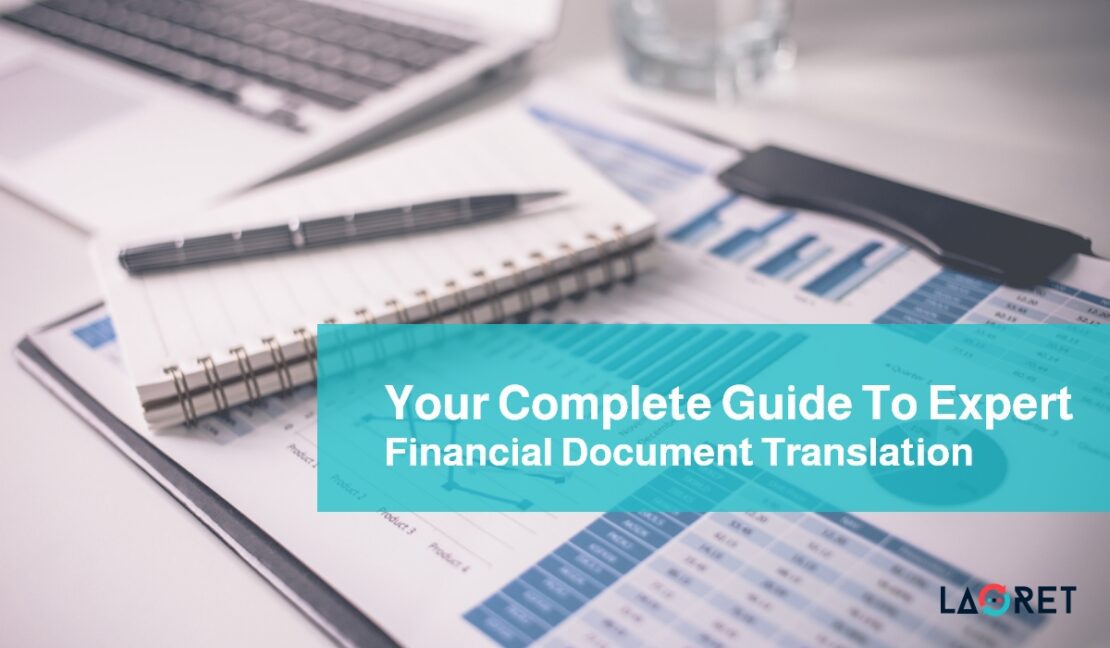Your Complete Guide to Expert Financial Document Translation
When tapping into new markets, your business translation strategy plays a significant role in positioning your business globally.
And in business translation, financial document translation, in particular, is crucial for your business’s global operations and collaboration.
But because it’s crucial, handling financial translation comes with its fair share of challenges.
From complex terminology to number localization, financial document translation is a rigorous task that is bound by local and international regulations, cultural sensitivities, and different language requirements.
Quality here goes beyond accurate language conversion. It demands more than just individual effort; it necessitates a collaborative team approach and a wealth of expertise that can only be provided by a specialized translation services provider.
In this article, learn the key factors that ensure high-quality financial document translation and valuable tips to help you to choose a reliable translation partner.
What is Financial Document Translation?
Financial document translation is the translation of a diverse range of financial papers, such as financial statements, annual reports, transactions, and more, making them clear, correct, and easy to understand in different languages.
But since financial documents combine textual content and numerical data, financial document translation gets more intricate. This requires a more comprehensive and nuanced approach than mere translation.
A professional translation must reflect the synergy between words and numbers through linguistic accuracy as well as financial precision.
There is a wide scope of financial documents that you need to have accurately translated, and they might vary from one industry to another.
But these are the typical required statements:
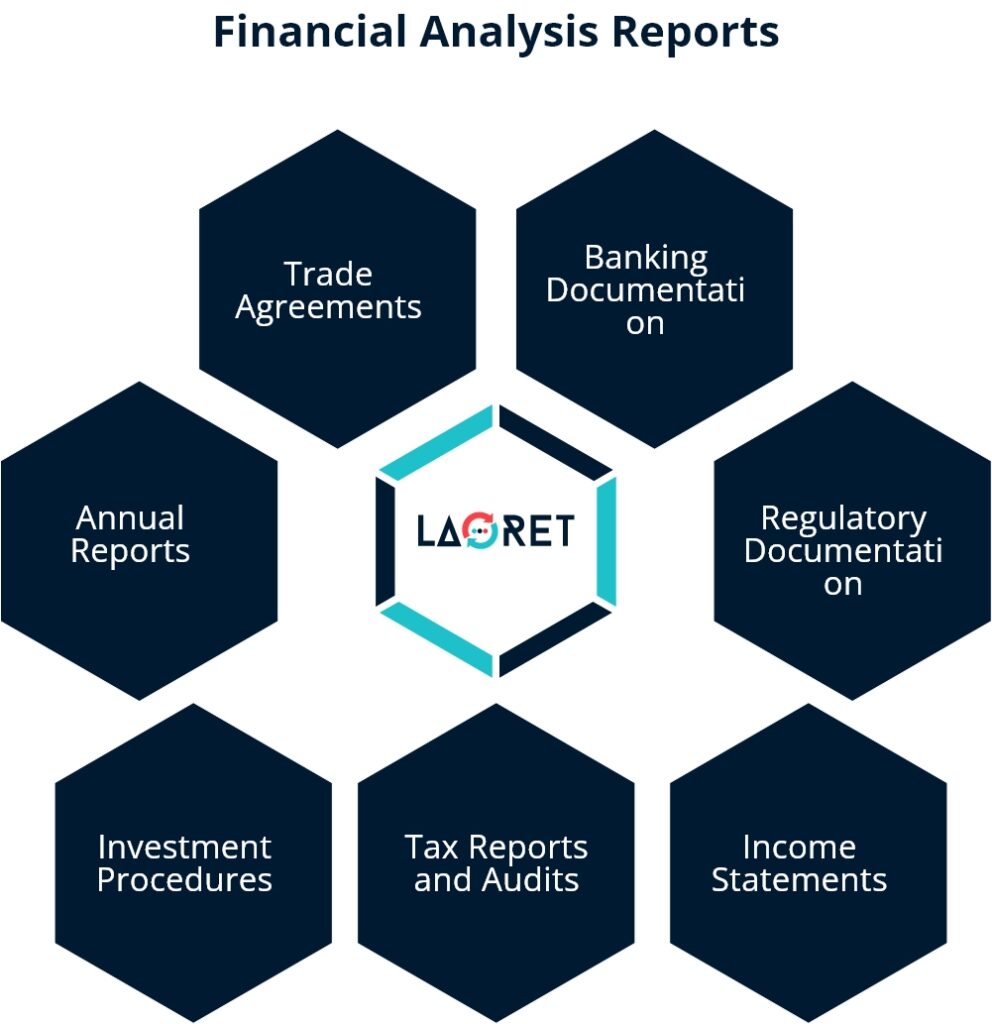
Who Needs Financial Translation Services?
– Financial Institutions
Highly regulated sectors such as banking, finance, insurance, and fintech rely heavily on financial translation services. Financial institutions deal with a large scale of transactions, financial statements, and communications that require language accessibility and professional translations.
– Expanding Businesses
Global business expansion, cross-border investment, and international trade demand professional financial translations. It is a top priority for growing businesses across industries to ensure regulatory compliance and effective communications worldwide through multilingual business documents.
– Multinational Corporations
Multinational companies and organizations, regardless of the industry, widely depend on financial translation services to maintain international collaborations and easily lure in new markets.
In short, opting for professional financial document translation services is essential for every business or financial institution embarking on global expansion.

Key Factors in Quality Financial Translation
Delivering top-quality business translations takes more than correctly conveying the message of the source text. Generally speaking, it is vital to ensure adherence to technical standards as well as contextual and cultural nuances.
That being said, financial translation specifically involves meticulous quality measures, which can be quite challenging.
From precise reporting standards and number localization to regulatory compliance on an international and local level, translators need to apply several industry-specific factors that tremendously impact the quality of financial translation.
Yes, we know it can be daunting. But it is important to consider these quality factors since they greatly impact the financial and legal standing of your organization.
So, let’s dive in!
– 1. International Financial Reporting Standards (IFRS)
Firstly, IFRS is an international framework that includes a set of accounting rules designed for the financial statements of public companies. It provides guidance on the preparation and presentation of financial statements to maintain the integrity of financial statements.
This framework involves all types of financial documents and their translations.
International Accounting Standards Board (IASB) issued these standards to ensure the following 4 aspects:
- Accuracy
- Consistency
- Comparability
- Transparency
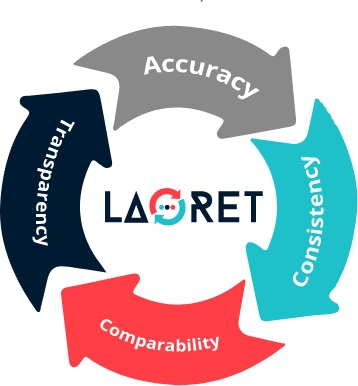
It is important to note that the IFRS Foundation Monitoring Board permits national authorities in every IFRS-compliant jurisdiction to carry out this framework and maintain it.
This is an extremely vital quality factor that requires the translator to seamlessly apply these reporting standards in the target language to avoid any legal penalties.
When you’re doing your research, you might come across the Generally Accepted Accounting Principles (GAAP) which is another, but quite similar, system used only in the US.
However, the good news is that there is no need for different systems if you aim to expand outside of the US! Since more than 100 countries comply with the IFRS standards worldwide.
So, which regions use IFRS?
Along with the European Union, there are over 100 different countries that adhere to IFRS. Here is to list a few:
- GCC Countries
- South America: Brazil, Chile, Argentina, Colombia, Mexico
- Asia: Philippines, South Korea, Taiwan, Turkey, Pakistan, Malaysia, Hong Kong, India, Singapore
- Australia and Canada
– 2. Financial Terminology
Just like any business document translation, financial documents include industry-specific terminologies, technical terms, and special jargon that are unique to the financial and accounting fields.
These terms may have nuanced meanings and implications that need to be accurately conveyed in the target language.
So, to ensure the accuracy and consistency needed, subject-matter experts must have in-depth knowledge of the field and its updates. Furthermore, they must be well-equipped with Terminology Management Systems that help maintain quality, consistency, and efficiency.
However, it’s not limited to this. A professional translator must also be native to both the target and source languages.
To give you an example of the critical sensitivity of terminology:
The term “Collateral” in English conveys different meanings depending on the context. We have marketing collateral, financial collateral, and collateral in physiology.
Accordingly, when translated from English to Spanish, for instance, the translation could be (fianza, garantas, or colaterales) depending on the context.
That being said, it is best to have in-country linguists who possess knowledge of language intricacies and cultural sensitivities.
But why are cultural nuances so important to consider?
– 3. Cultural Nuances and Context
Besides the challenge of complex terminology, translators need to acquire an intensive comprehension of cultural and contextual nuances.
Financial content uses terms that might have other meanings in different contexts. That means a misinterpretation of the key message in the source document could lead to huge mistakes.
For instance, in 2005, a poorly-translated Chinese report dramatically shifted the global exchange market in the span of hours. The report issued by China News Service, a large news agency in China, was translated and published on the People’s Daily website.
In the article, Guan Xiangdong, the news reporter, addressed the possible appreciation of the Yuan (the Chinese currency) and its impact
A mere speculation about a possible Yuan rise of 1.26% over one month took a wild turn. Since the translation stated a bold decision to value the Yuan by 1.26% within a month.
Consequently, panic spread worldwide, and serious decisions have been made in the exchange market.
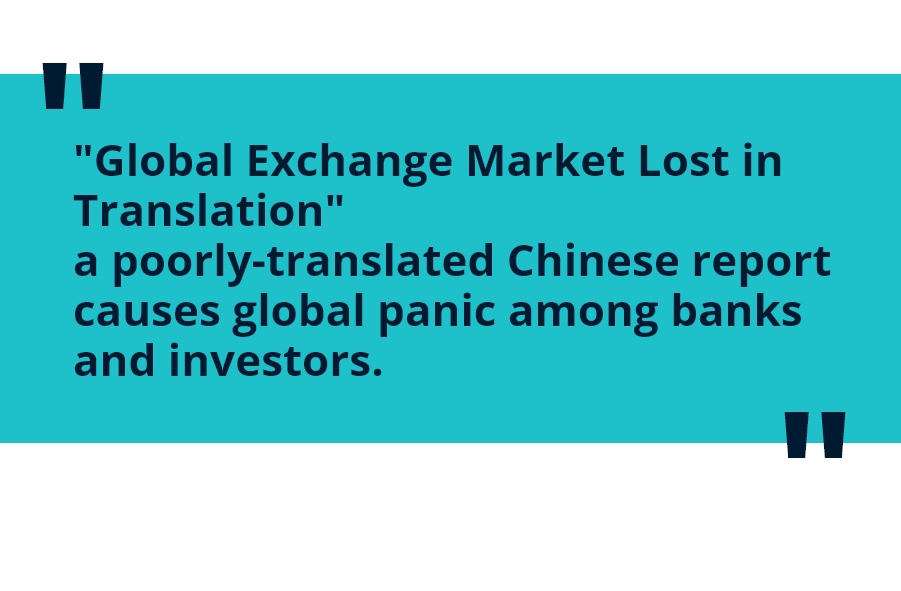
– 4. Number Localization
Numbers don’t always carry the same cultural or financial significance across languages, and ensuring precision requires more than straightforward translation. It requires localization.
When dealing with numbers in financial document translation, it is essential to take into account the numeral system of the target language as well as the specific rules of the target locale.
So, what aspects should the translator pay attention to during the number localization process?
Let’s break them down!
Numeral Systems
Usually, countries within the same region use the same numeral system. However, some groups may use different ones.
For example, many Middle Eastern countries use Western Arabic Numerals and Eastern Arabic Numerals interchangeably. In contrast, locales like Iran and Afghanistan exclusively use Eastern Numerals.

Decimal Separators
When it comes to separating number digits, the question is: Comma or Point?
Well, even neighboring countries differ in their use of decimal separators.
For example, The UK uses a decimal point, unlike most European countries. In addition, North Americans also use a decimal point, while South Americans use a comma.
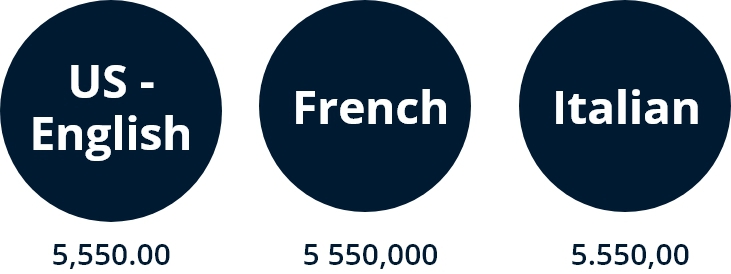
Breaking Up Numbers
When it comes to breaking up large numbers, separating thousands with a comma is the most common standard.
But again, some numeral systems do it differently!
For example, the Indian system groups the three digits on the right-hand side of an integer together and then separates those digits into pairs from the left-hand side.
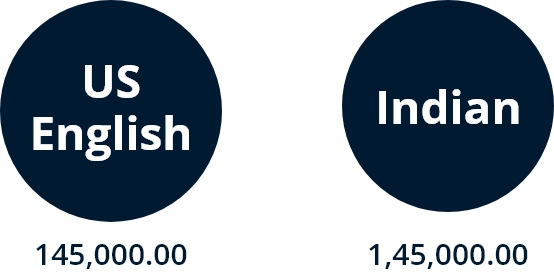
The Japanese numbering system is different in counting ten thousand, million, and billion.
To illustrate, when counting over nine thousand, they employ a unique term for every four digits, as shown below:
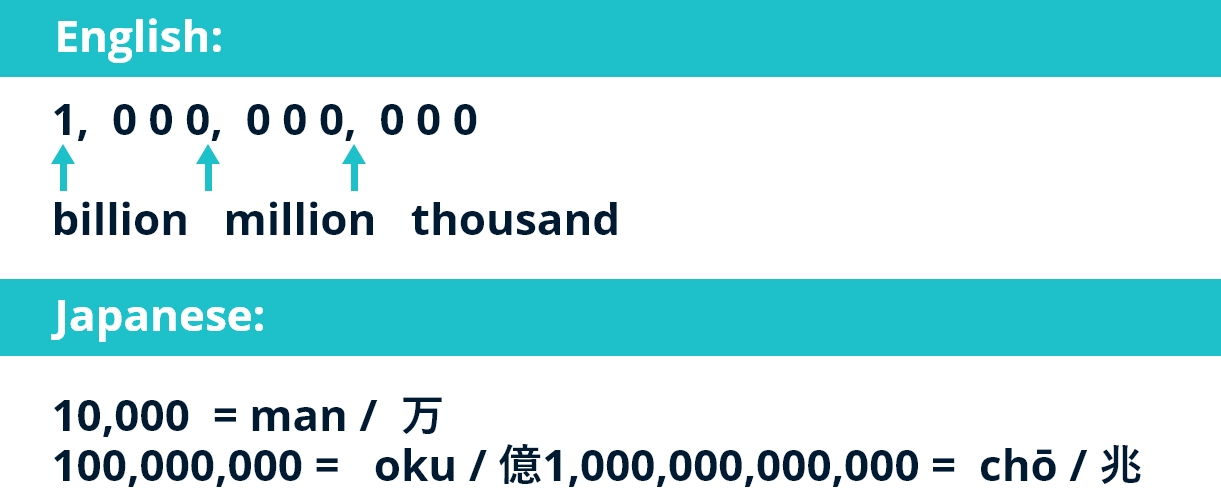
That’s right – it can be quite challenging to keep up with different systems and local standards.
However, it is important to note that experienced financial linguists will maintain these quality standards and deliver highly accurate translations.
How to choose a reliable financial document translation service?
Now that we have covered quality factors in financial documents, the question is: how can you land the best financial translation services to meet these standards?
Lets explore 4 tips to guide you in your search!
1. Language and Technical Expertise
For starters, make sure your language service provider has extensive experience in the financial industry on both local and international levels. You can ask about the types of projects they handled and check if they have experience in the target language youre seeking.
On top of that, they should have native financial linguists and localization specialists in place. Translators should be able to flawlessly apply language rules, local regulations, and financial reporting standards of the source and target languages.
2. Fast turnarounds
When it comes to financial documents, you have to take into account the time-sensitive operations at stake. Here are 2 reasons why fast turnarounds are essential:
- Timely decisions are a priority in trading and finance since market conditions are rapidly changing. This means you can’t allow the translation process to hinder your decision-making.
- International businesses can’t afford to delay a winning deal or partnership. Not to mention the large number of transactions and statements that require on-demand translation.
That’s why it’s best to work with a financial translation agency that guarantees fast deliveries and has an experienced team that will easily work with tight deadlines without compromising quality and accuracy.
Also, it is important to note that professional services must integrate translation tools into the process to save you time and money.
Read on to learn more about translation tools!
3. Translation tools
Integrating advanced translation tools, such as Translation Management Systems, CAT tools, Translation Memory, and Terminology Management tools, is undeniably important and helps streamline the process of financial translation.
So, utilizing these cutting-edge technologies will simply ensure
Consistency: Using glossaries, terminology management, and automated quality checks ensures consistent, error-free translations.
Cost-effectiveness: Tools like translation memories and terminology management systems help automate the translation process and reduce costs for repeated content.
Fast turnarounds: Certainly, a streamlined workflow will guarantee fast turnaround times. Tools like Translation Memories (TM) can save time by using previous translations for repetitive segments.
4. Confidentiality
It is critical to ensure the complete confidentiality of financial documents. Financial content involves sensitive information and legal statements that should remain confidential.
There are several rigorous methods that translation companies follow to maintain confidentiality.
-
Non-disclosure Agreement (NDA)
All stakeholders involved in the project should sign a non-disclosure agreement. NDA is a legally binding contract that outlines disclosed information, terms, and conditions to protect all confidential documents shared between two parties.
-
Secure Communication Channels
Communication channels between translators, project managers, and clients are essential and should have strict access controls. Access to financial content is critical and permission should be granted only to those directly involved in the translation process.
-
Data Handling Protocols
Translation software should provide robust data protection features. There should be a set of strict policies for handling disclosed data and offering secure storage, transfer, and disposal of confidential content.
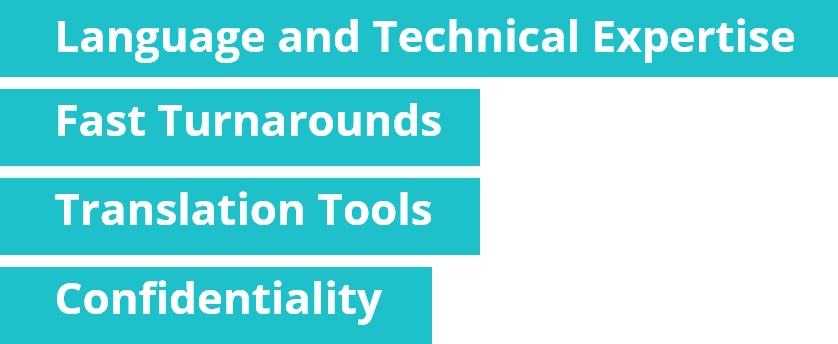
Conclusion
Financial document translation is an intricate process with several quality factors to consider. It takes excellent language and technical expertise to deliver error-free translations that comply with international standards and local regulations.
To meet all the necessary quality standards, you should go for certified experts who obtained financial expertise on an international level.
Laoret’s ISO-certified business translation services offer optimal subject-matter expertise in over 120 languages.
Due to our extensive experience in the financial industry, we meet all your needs with our rigorous Quality Assurance procedures and international compliance. Our multidisciplinary team excels at every type of document translation using cutting-edge technology to deliver accurate translations while committing to fast turnarounds.
Request a quote now and see for yourself!
Tips on How to Effectively
Work Together with Your Post-Editing Team
Check our ultimate guide to Machine
Translation Post-editing to get more details.

